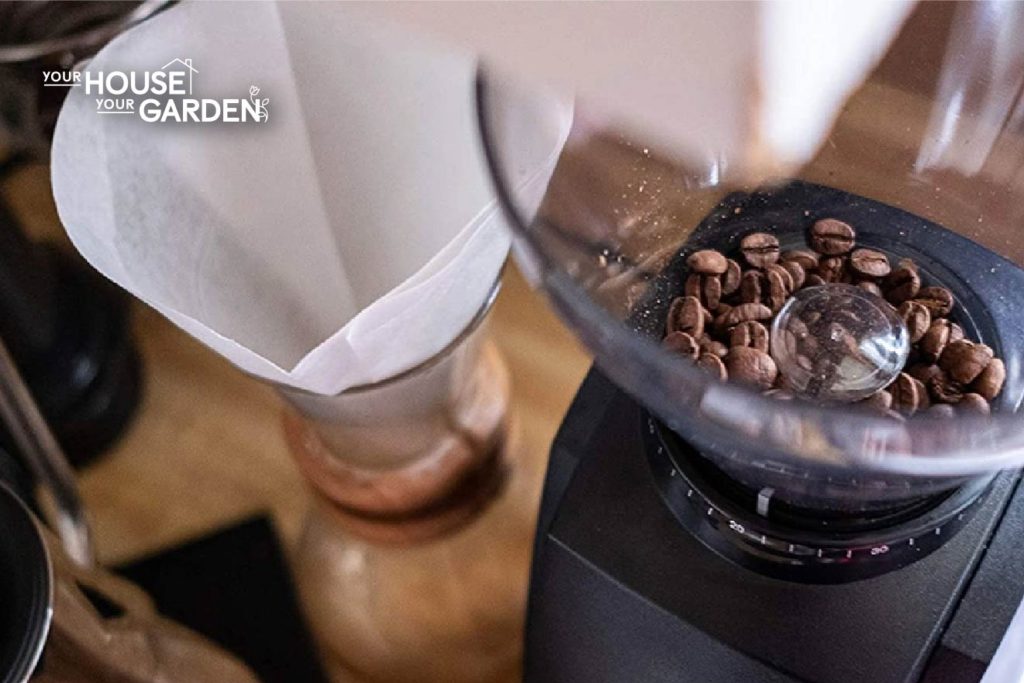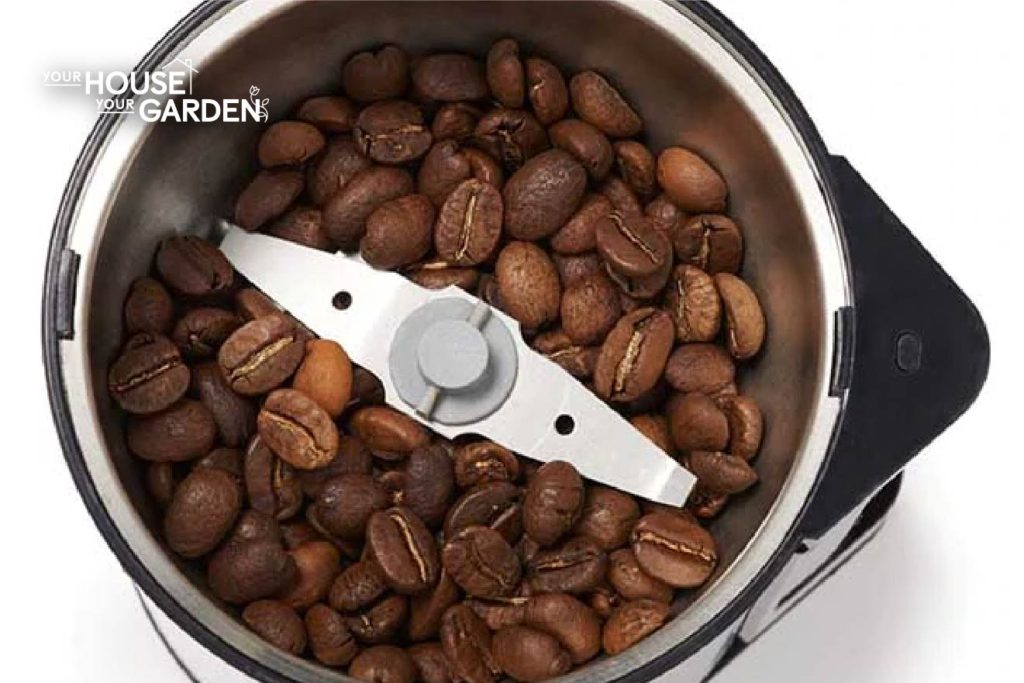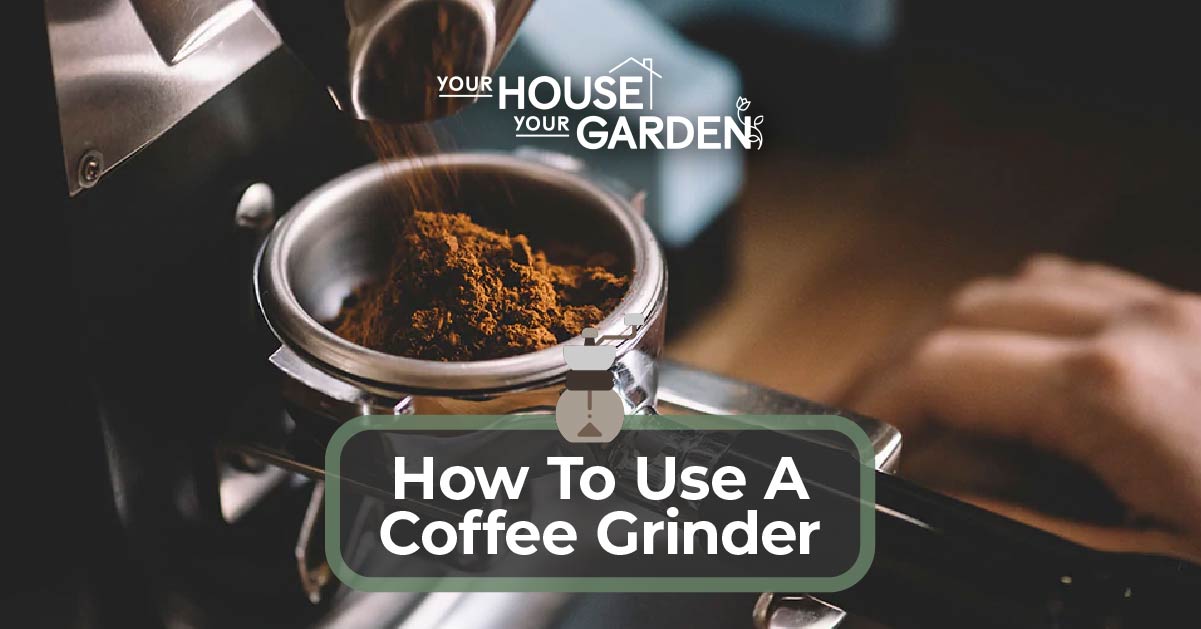Using a coffee grinder involves the following steps: Opening the lid, filling the grinder with coffee beans, choosing the grind size, closing the lid, and pressing start.
What is a coffee grinder? Coffee grinders are small devices that grind roasted coffee beans into small bits. The finely grounded coffee bits By doing so, it allows water to extract caffeine and other compounds to make coffee.
If you’d like to learn more about how to work a coffee grinder, refer to our in depth coffee grinder usage guide below.
1. Open Lid and Fill Grinder With Coffee Beans
The first step to using the coffee grinder involves opening the lid and filling it with coffee beans. The amount of coffee beans you’ll load will depend on the total capacity of your grinder and how many cups of coffee you wish to brew.
For example, the average home coffee grinder can grind roughly 4 oz of dried coffee beans at once, which is enough to make 12 cups of coffee. Larger models also exist that can grind up to 8 oz. of dried coffee beans at once, enough to make 24 cups of coffee.
Of course, these numbers are just an average and if you prefer your coffee stronger, the amount of coffee per ground oz. of bean will go down.
2. Choose Grind Setting
What grind setting you choose will depend on what device you’re using to make your coffee.
For French Press and Cold Brew coffee, coarse/chunky grinds are the best. Not only does it help to lock in the aromas and flavors, but it keeps a higher amount of antioxidants in tact. That said, coarse grinds will take longer to brew than fine grinds.
When using a standard coffee pot, set your grinder to medium. By doing this, you keep a good amount of the aroma/flavor intact while increasing the brew time.
Finally, if you plan on using an espresso machine, you’ll want to finely grind your coffee beans. Doing so releases a lot of the caffeine and will increase the brewing time.
Not all coffee grinders come with multiple settings and many of the most basic models will have only a single button.
3. Press Start and Wait
Now that you have your coffee beans loaded and the appropriate setting selection, plug the grinder in, close the lid, and press start. Most grinders will run for a pre-programmed amount of time..
4. Empty Out Coffee Grinds
When the grinder process has ended, unplug the grinder, open the lid, and dump the contents into your coffee filter, French Press, or whichever device you are using to brew your coffee.
5. Clean Your Coffee Maker
It’s not necessary to clean your coffee maker after each use, but oils and coffee particles will accumulate over time. A good way to clean your coffee grinder is by grinding a half cup of rice for a minute and then emptying out the contents. The rice will suck up a good portion of the oil/moisture as well as scrape the sides clean of any caked on coffee residue.

Coffee Grinder Tips for Efficiency and Improved Taste
When using your coffee grinder, there are a few tips you can follow for better efficiency and improved bean taste, the most important being:
- Clean Often: If you regularly use different beans, it’s a good idea to clean your grinder regularly. If not, leftover residue from past beans can impact the taste of whatever beans you’re currently brewing.
- Keep Beans Fresh: Once you open a bag of coffee beans, make sure to properly seal the bag after opening. If the bag doesn’t come with its own seal, you can store the bag of coffee beans in a zip-lock bag between uses.
- Don’t Pre-Grind Beans: Some people like to grind a few days worth of coffee at once. While this can save some time each morning, coffee begins to lose its freshness rapidly after being ground. For the freshest coffee, always grind right before you brew.
- Measure Out Your Beans: Most people eyeball the amount of coffee beans to grind. While this works, it can result in unnecessary use of coffee beans. Instead, measure out how many beans you’ll need based on how many cups you want to brew. The most common measurement is 7.5 – 10 grams of coffee beans per cup of coffee.
- Use The Right Water: When it comes time to brew your coffee, the type of water you use can make a major difference. If the water is too high in minerals, it can reduce the amount of coffee that gets dissolved in the water.
Main Steps and Mistakes for Coffee Grinder Usage
Using a coffee grinder can be broken down into the following stages:
- Measuring out the appropriate amount of coffee beans to use.
- Loading the coffee beans into the grinder and closing the lid.
- Plugging the coffee grinder, choosing the grind setting, and pressing start.
- Waiting for the process to finish.
Some of the best coffee grinders are equipped with several grind settings, allowing you to fine tune the grind depending on what beans and brewing device you’re using.
Does The Coffee Grinder Type Affect The Usage Stages?
Yes, the coffee grinder type affects the usage stages. To understand how, we must look at the different coffee grinder types.
- Blade Grinder: Blade Grinders use a propeller like blade to chop and grind coffee beans.
- Burr Grinder: Instead of a blade, Burr grinders crush coffee beans between two spinning wheels. Burr grinders are very effective at releasing the oils trapped inside the coffee beans.
- Doser Grinder: Contains a mechanism that collects the coffee once it’s been ground. This mechanism can be set to dispense specific doses, like one, two, or three cups.
- Non-Doser Grinder: A coffee grinder that doesn’t have a dosing mechanism.
- Manual Coffee Grinder: Manual coffee grinders come with a handle that you must rotate to grind the coffee.
As we can see, the manual coffee grinder will take more time and energy to operate. Moreover, Doser Grinders will involve the extra step of assigning a dosage amount of the catching mechanism.
When To Prefer A Coffee Grinder Over A Blender
The coffee grinder is the better option for grinding coffee beans, nuts, and spices. Moreover, Blenders aren’t designed to be operated dry and water should always be added to a blender before use.
Blenders also have much larger blades than coffee grinders and they’re not capable of grinding coffee beans as finely as grinders. When it comes to the question of coffee grinder vs blender for grinding coffee beans, the coffee grinder is the clear winner.
Alternative Uses Of A Coffee Grinder For Other Uses Besides Grinding Coffee
With a bit of ingenuity, coffee grinders can be used for other uses besides grinding coffee.To learn more about the different coffee grinder uses, refer to the sections below.

Use A Coffee Grinder As A Food Processor
Coffee grinders cannot be used as a food process because they’re not designed to grind liquid-containing food items. That said, you can use a coffee grinder to process dry foods like nuts, spices, and dried roots.
Use A Coffee Grinder As A Spice Grinder
To use a coffee grinder as a spice grinder, follow these steps:
- Measure out the amount of raw material you wish to grind.
- Place it in the coffee grinder and close the lid.
- Plug grinder in, choose the appropriate grind setting, and press start.
- Wait for the process to finish then empty out the contents.
Use A Coffee Grinder As A French Press
You cannot use a coffee grinder as a french press. Coffee Grinders are built solely for grinding roasted coffee beans and not for brewing coffee.

